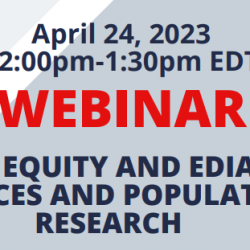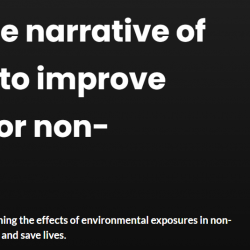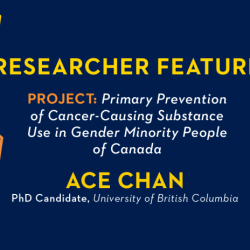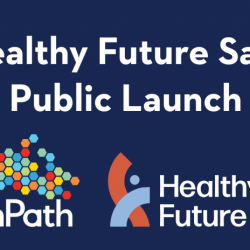Webinar: Advancing Equity and EDIA Through Health Services and Population Health Research
An upcoming webinar presented by the Canadian Institutes of Health Research (CIHR) and Canadian Association for Heath Services and Policy Research (CAHSPR). Advancing Equity and EDIA through Health Services and Population Health Research Presentations from Dr. Katie Aubrecht and Dr. Andrew Pinto. April 24th, 1-230pm (AST) Registration: https://events.eply.com/2023HSPRTalksApril24 “Improving equity in health care and health outcomes is a goal held by many and one that is increasingly prioritized by a range of stakeholders. Health services and policy research (HSPR) and population and public health research (PPHR) have important roles to play in advancing health equity goals. To maximize their contribution to improving health equity, equity, diversity, inclusion, and accessibility (EDIA) within these fields must also advance. This webinar will present the concepts and histories of these two distinct but interrelated concepts (health equity and EDIA), offer possible strategies and actions for the HSPR and PPHR communities to incorporate equity and EDIA in their work, and foster discussion among people interested in improving their contribution to a more equitable society. The session will draw upon two recent papers, available for reading prior to the session here and here, and reflects a partnership between CAHSPR and CIHR’s Institutes of Health Services and Policy Research (IHSPR) and Population and Public Health (IPPH).” Additional info: https://s3.ca-central-1.amazonaws.com/eply-client-files/191/AccountFiles/Documents/HSPR/HSPR%20Talks%20Advancing%20Equity%20and%20EDIA.pdf










